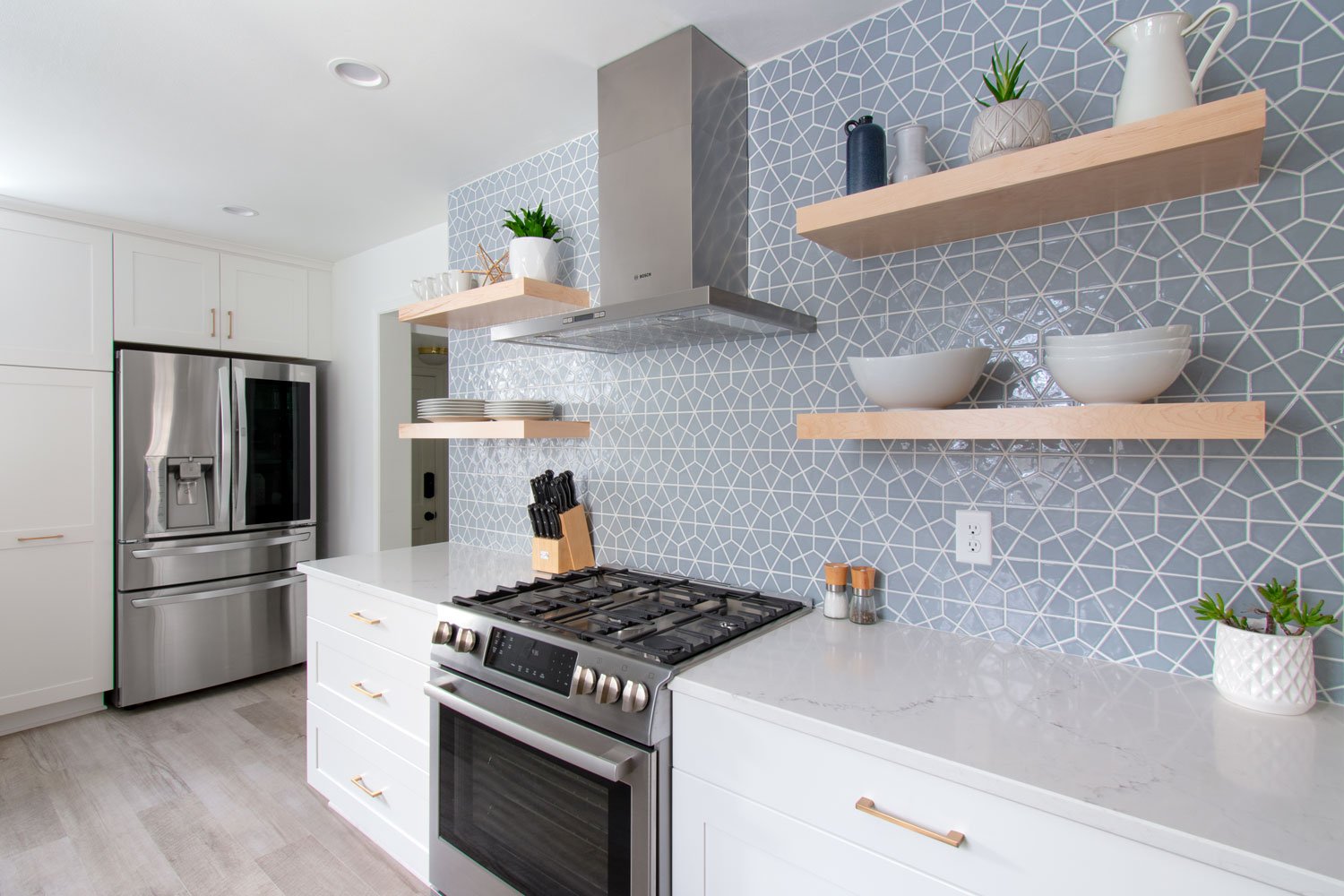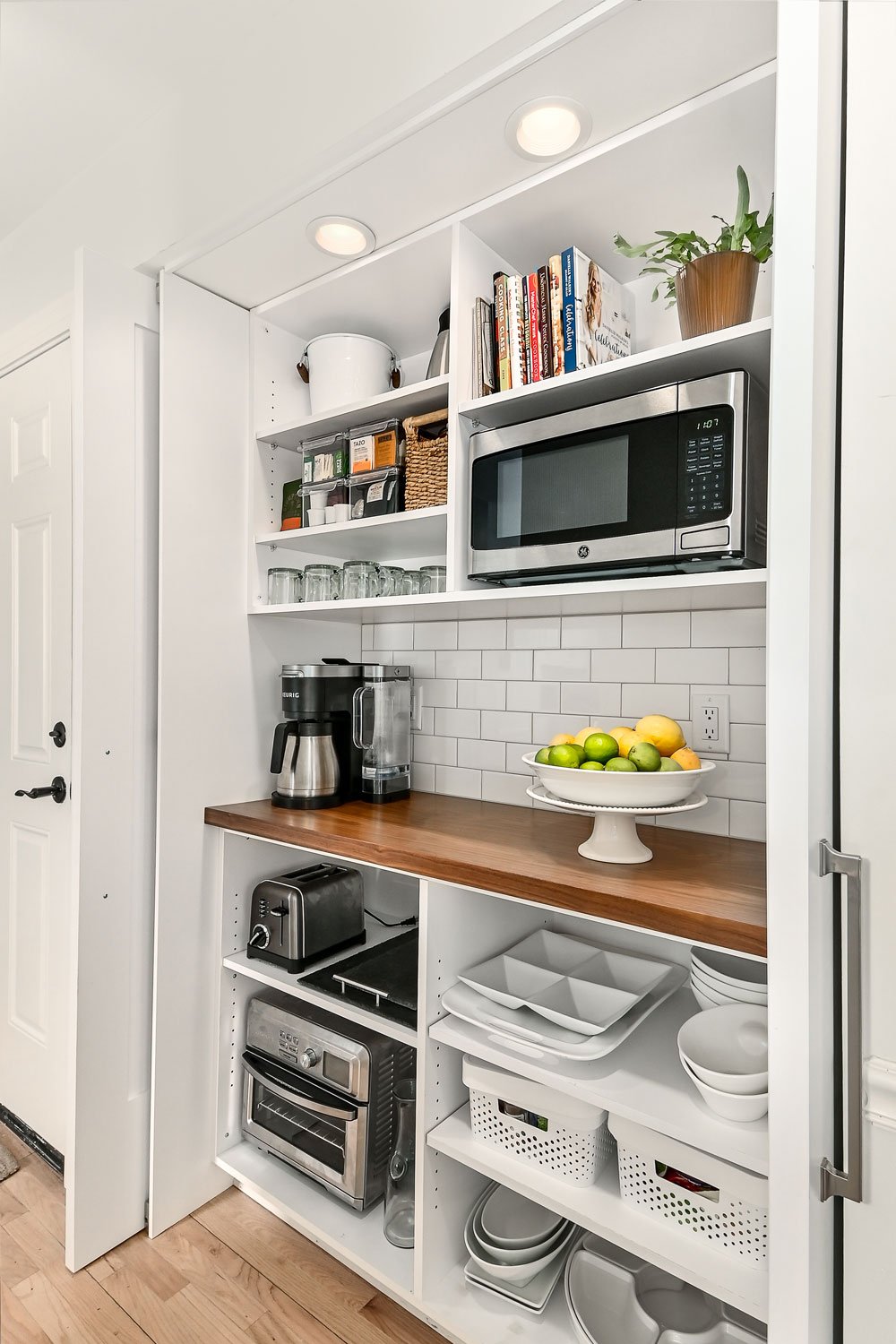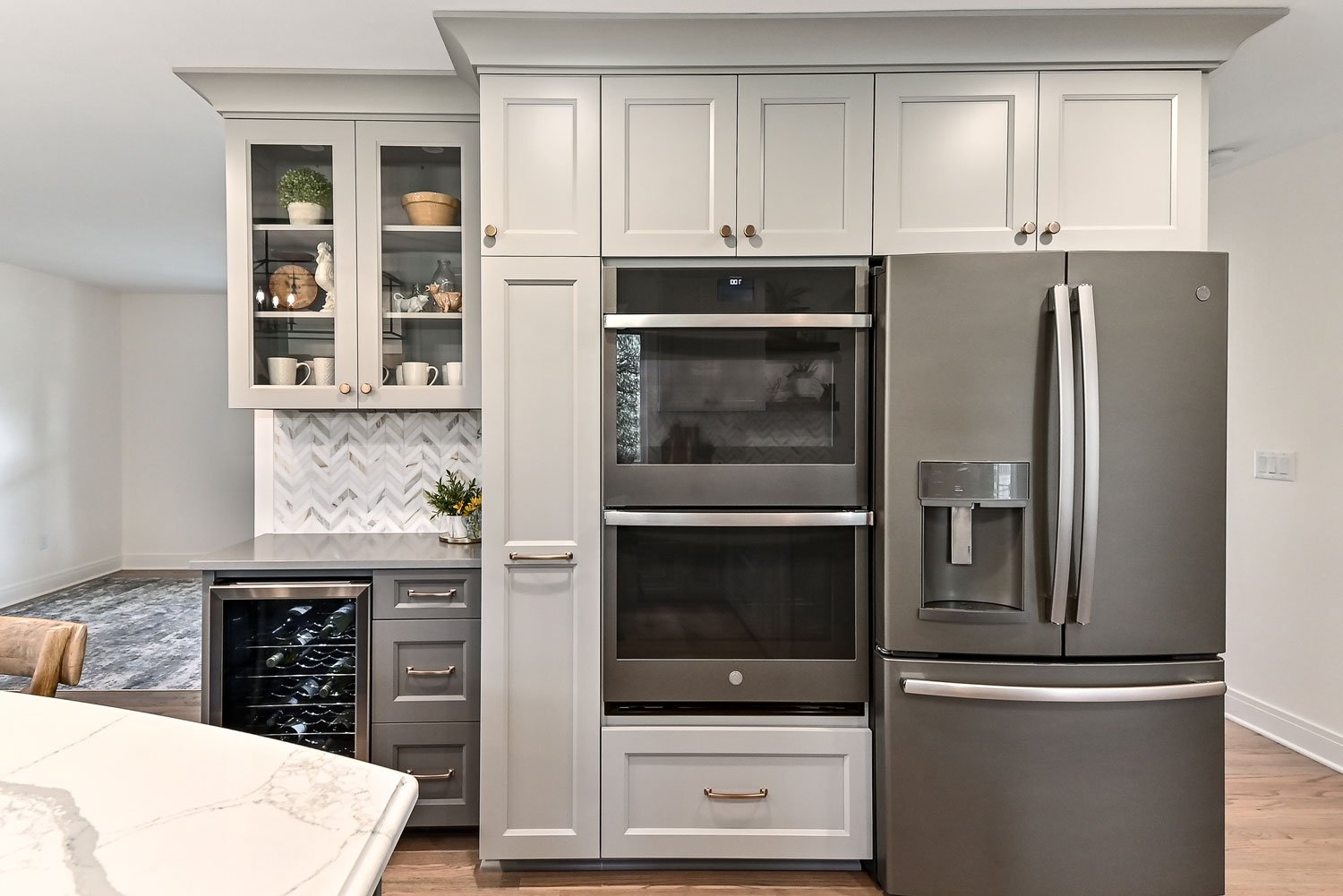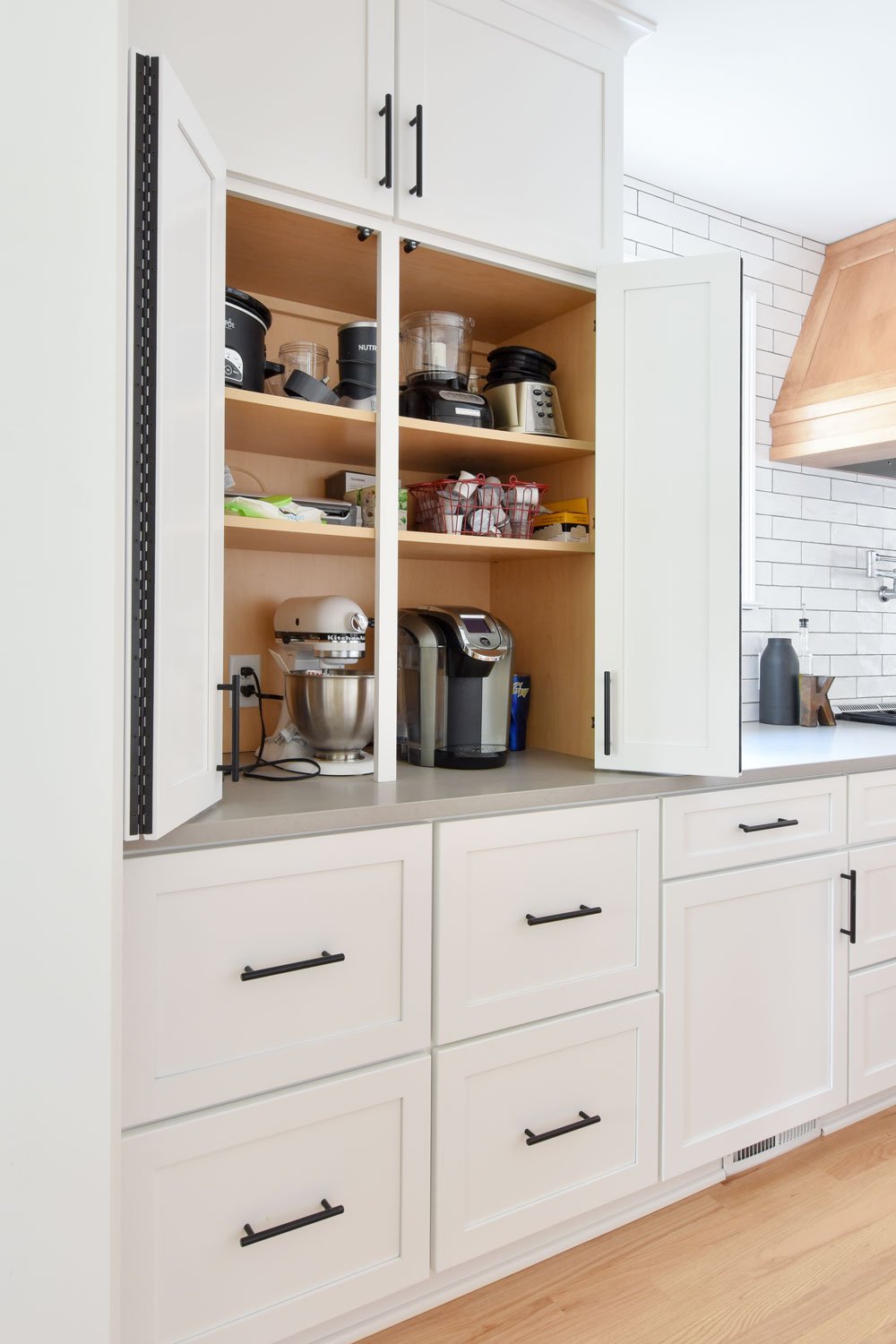If you are looking into remodeling your kitchen, now is a great time to research appliances. Learn what kitchen appliances are the most energy-efficient and which use the most power. Our experts can help you make smart appliance purchasing decisions for your Waukesha kitchen remodel.
- What are ENERGY STAR Appliances?
- Average Wattage of Kitchen Appliances
- Microwave Oven
- Standard Refrigerator / Freezer Combo
- Electric Range
- Range Hood
- Dishwasher
- Coffee Maker
- Espresso Machine
- Thermoelectric Wine or Beverage Fridge
- KitchenAid Mixer
- Slow Cooker
- Instant Pot
- Key Takeaways on Energy Efficient Appliances
What are ENERGY STAR Appliances?
The best of both worlds, ENERGY STAR-certified kitchen appliances are designed so consumers don‘t have to sacrifice product performance with a “smart” appliance. They are built in accordance with strict government standards that make them more energy-efficient, ultimately lowering your energy bills and carbon footprint. You can learn a lot about what kitchen appliances use the most energy by checking out the ENERGY STAR ratings on the yellow product label. Whether you are buying a home now or remodeling your kitchen, it’s a great time to research appliances and their energy consumption.
Average Wattage of Kitchen Appliances
Home appliance energy consumption is measured in units called kilowatt-hours (kWh). You can use these figures when searching for new energy efficient appliances.
Microwave Oven


The average-sized microwave oven uses about 215 kWh of electricity per year.
In terms of energy usage, the appliance’s wattage ranges from 600 to 1,500 watts. However, because microwaves are only used for short periods of time, their overall yearly energy use is lower than what their pull would suggest.
If you use a 1,200-watt microwave for 30 minutes per day, the overall annual energy usage will be around 215 kilowatt hours (kWh).
Standard Refrigerator / Freezer Combo

In contrast to microwave ovens, the average refrigerator wattage runs anywhere from 150 to 400 watts, which is a relatively small amount. But because refrigerators are used 24 hours a day, 365 days a year, their annual consumption can vary between 720 and 1,800 kWh. Older, less efficient models consume the most electricity.
Electric Range

Depending on its age, an electric range with a single conventional oven can draw a blinding 1,000 to 5,000 watts of power, although modern versions typically pull 2,400 watts. But much like your microwave, the electric range wattage isn’t used constantly. Assuming you use it as often as the microwave (for comparison purposes), a single electric oven running at 300 to 425 degrees Fahrenheit consumes about 875 kWh per year. That figure also includes one hour per day of electric stovetop usage with the burners set on medium to high heat.
Range Hood


Your range hood operates on an economical 25 kWh per year.
Most range hoods pull anywhere from 70 to 150 watts. When used as often as a conventional electric range, the yearly energy consumption of a range hood is only about 25 kWh.
Dishwasher


Your dishwasher runs on up to 855 kWh annually.
An average dishwasher pulls about 1,200 watts of electricity. However, calculating the yearly consumption varies greatly depending on whether you use an energy saver cycle vs. the ultra-hot, longer running scouring cycle. Also, take into consideration whether your household water is heated by gas or electricity. For comparison purposes, the yearly energy consumption, using the standard of 1.5 hours of usage per week, ranges between 300 kWh and 855 kWh.
Coffee Maker


A typical coffee maker uses 13 kWh to 42 kWh per year.
The energy draw for an appliance like a simple coffee maker runs between 500 to 1,000 watts. However, coffee machine brewing habits vary greatly from household to household. Rough calculations for annual energy consumption depends on how much of a coffee addict you are, but typically ranges between 13 kWh and 42 kWh.
Espresso Machine


Your espresso machine is one you may want to reserve for special occasions!
The appliance consumes a whopping 1.25 kW per cup and the wattage of most espresso machines is 1,000 to 1,500 watts. Based on just one cup per day, an espresso maker averages a robust 450 kWh annually, making it one kitchen appliance that you may want to use just here and there as needed.
Thermoelectric Wine or Beverage Fridge

A thermoelectric wine/beverage fridge relies on electricity to cool the cabinet. Depending on the capacity, most pull 50 to 75 watts, but they do run constantly year round. On an annual basis, a 50-watt mini fridge will only use about 1.3 kWh.
KitchenAid Mixer


A KitchenAid mixer uses approximately 11 kWh per year.
A powerful KitchenAid mixer is wonderful for baking delicious cakes and breads. Drawing about 200 watts of electricity, your prized mixer, when used for one hour per week, consumes about 11 kWh annually.
Slow Cooker
Slow cookers only use about one-tenth of a kW per hour. As a real time-saver, the average 4-quart electric slow cooker pulls about 200 watts of energy. Used for 10 hours per week, your slow cooker will take about 110 kWh to operate in a given year. Some slow cookers have built-in temperature sensors that switch the cooker to “warm” mode once the desired temperature is reached. This helps conserve energy even further.
Instant Pot
An Instant Pot cooks food even more efficiently than a crockpot. As a fully insulated electric pressure cooker, an Instant Pot uses less water and electricity than a slow cooker, resulting in even shorter cooking times. A 6-quart Instant Pot draws about 1,000 watts, which means when used for an average of 10 hours per week, it will consume about 520 kWh of energy annually.
Key Takeaways on Energy Efficient Appliances
- The most energy-efficient kitchen appliances are: a range hood, wine/beverage mini-fridge and a KitchenAid mixer.
- The most electricity is consumed by a fridge/freezer, electric range and dishwasher. This is mainly because they are used so much.
- The espresso maker uses 450 kWh annually, at one cup a day.
- For cooking purposes, an electric slow cooker, Instant Pot or microwave will use less energy than will an electric range.
- If you invest in expensive appliances, secure your house with an alarm system in order to prevent thefts.
Appliance Shopping
Whenever you’re switching out old appliances during a kitchen remodel, it’s wise to check out the Energy Star ratings. Designed to work more efficiently, Energy Star appliances offer long-term benefits, including lowering the carbon footprint of your Waukesha, WI, home. Over time, even a small reduction in energy consumption can also make a big difference in your electricity bill. For expert guidance from the Kowalske team, contact us to schedule an appointment today.
More Kitchen Articles
- Top Remodeling Design Trends of 2023
- Luxury Kitchen Features You Want
- The Best Kitchen Flooring Options
- Our Favorite Kitchen Countertops
- Kitchen Backsplash Ideas
- Storage Organizers for the Kitchen
- Planning Your Kitchen Remodel
- Kitchen Remodeling Costs
Our Favorite Kitchen Projects
- Bold Black New Berlin Kitchen
- All-white kitchen with double islands
- English Cottage Kitchen Remodel – Oconomowoc
